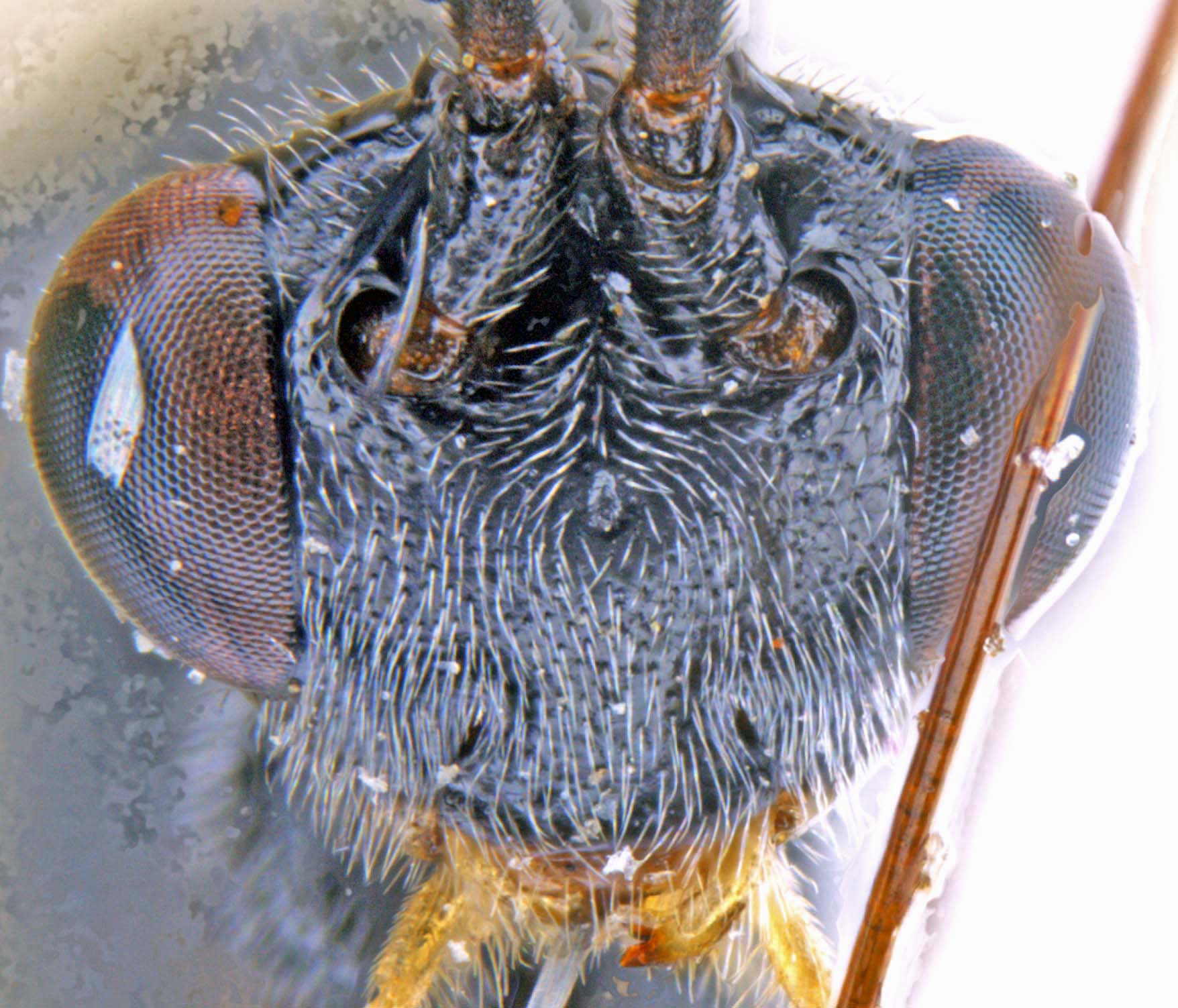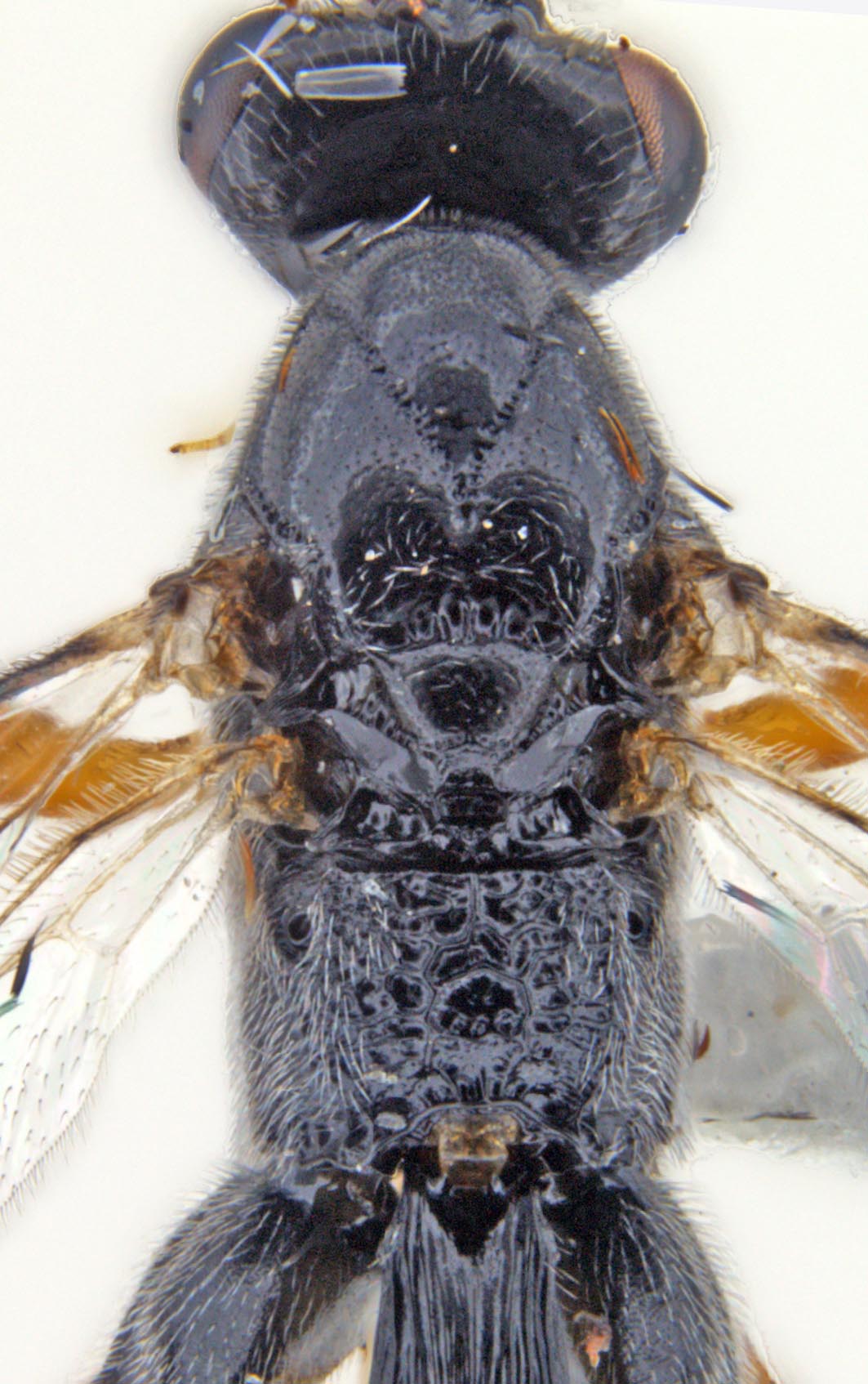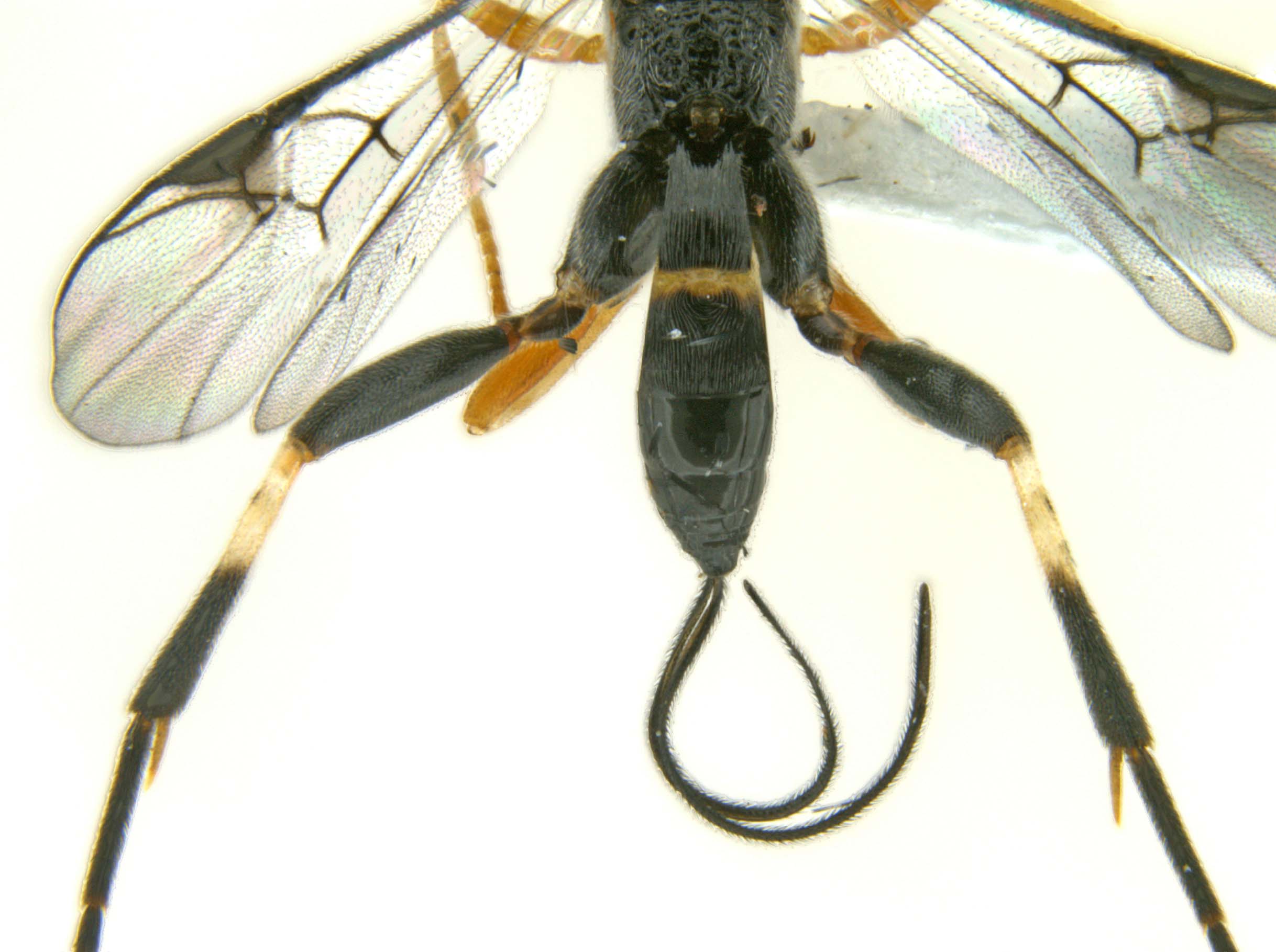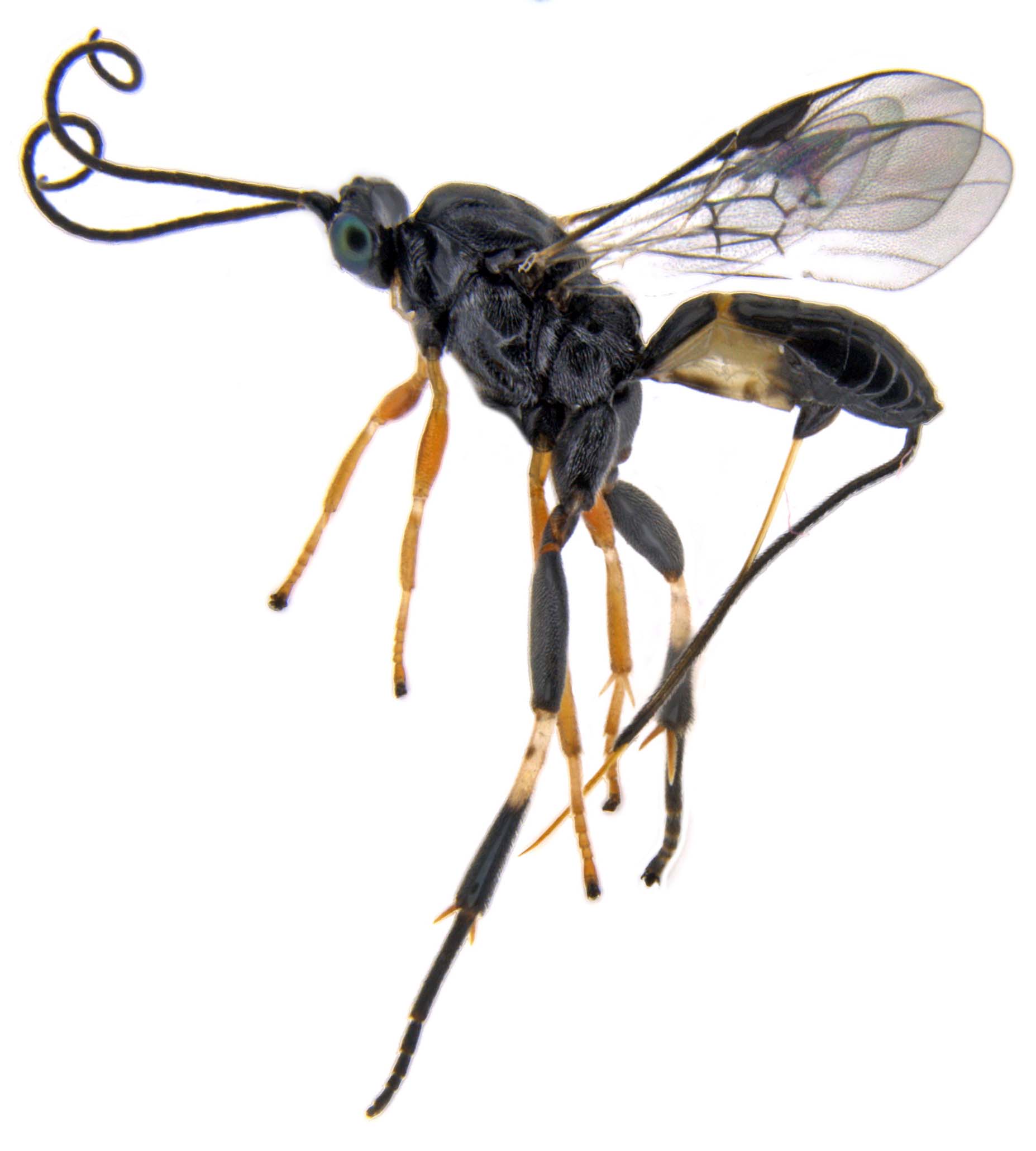 |
Scientific nameTherophilus festivus (Muesebeck)
Taxonomic positionInsecta: Hymenoptera: Ichneumonoidea: Braconidae
DiagnosisFemale: Colour. Black; antenna blackish brown; basal half of hind tibia and lateral sides of T1 and T2 white; fore and mid legs (except coxae) and base of T2 yellow; remainder of metasoma and hind leg black (except basal half of hind tibia); mandible brown; palpi yellow; wings infuscated. Body length 5.5 mm, fore wing 4.4 mm, ovipositor sheath 4.3 mm. Head.
Antenna with 32 segments, length of third segment 1.05 times fourth segment, length of third, fourth and penultimate segments 2.9, 2.7 and 1.5 times their width, respectively; length of maxillary palpi 0.7 times height of head; malar space 1.6 times as long as basal width of mandible; in dorsal view length of eye 2.4 times temple; ocelli in low triangle, POL: OD: OOL= 16: 8.9: 22.8; face setose, largely smooth and finely punctulate; clypeus largely smooth and moderately convex;
frons with obsolete medial ridge, with wide flattened triangular area in front of anterior ocellus; vertex and temple shiny and smooth, temple with sparse punctures.
Mesosoma. Length of mesosoma twice its height; pronotum largely smooth, with carinae anteriorly, with some punctures dorso-posteriorly; area near lateral carina of mesoscutum indistinctly crenulate; mesoscutum spaced punctulate, medio-posteriorly lobes flattened posteriorly; notauli complete and narrowly crenulate, ending distinctly in front of scutellar sulcus; scutellar sulcus half as long as dorsal face of scutellum, shallow, curved and with 3 short carinae;
scutellum shiny and smooth (except for some punctures at apex); mesopleuron comparatively robust; precoxal sulcus narrow, rather deep, crenulate; mesopleuron below precoxal sulcus spaced punctulate; remainder of mesopleuron shiny and largely smooth; metapleuron densely setose, dorsally rather coarsely punctate; propodeum rugose, without median carina, and with areola posteriorly; propodeal spiracle rather small and oval.
Wings. Fore wing: second submarginal cell narrow and petiolate, vein SR1 slightly curved at apex otherwise straight; vein r very short, r: 3-SR+SR1 = 1:26. Hind wing: vein M+CU 0.8 times as long as vein 1-M.
Legs. Length of hind femur, tibia and basitarsus 4.1, 6.4 and 8.9 times their width, respectively; hind femur finely rugose at base and apex and with short setae; length of outer and inner spur of middle tibia 0.5 and 0.6 times middle basitarsus, respectively; middle tibia with a row of 2 pegs at apex; length of outer and inner spurs of hind tibia 0.3 and 0.4 times hind basitarsus, respectively.
Metasoma. First tergite subparallel-sided, slightly widened apically and 1.2 times as long as its apical width; second tergite not elongate, densely and moderately coarsely striate; remainder of metasoma smooth; ovipositor sheath 1.08 times as long as fore wing.
 Head in frontal view Head in frontal view
 Mesopleuron Mesopleuron
 Metasoma Metasoma Fore claw Fore claw Wing WingImagesDistribution
Vietnam, China, India (Karnataka), Japan (including Okinawa), Korea, Nepal, Philippines (Mindoro), Russia (Far East) and was introduced into the U.S.A.
Biology / Host rangeTherophilus festivus (Muesebeck, 1953) is known as a parasitoid of Tortricidae, Pyralidae, Blastobasidae, Carposinidae, Noctuidae, Gelechiidae and Cossidae. van Achterberg and Long (2010) expressed the improbability of such a wide host range as no reared material was examined by them. This species is distributed in Vietnam, China, India, Japan (including Okinawa), Korea, Nepal, Philippines (Mindoro), Russia (Far East) and was introduced into the U.S.A.
Bhat and Gupta (1977) mentioned three hosts for this parasitic wasp- Grapholita prunivora (Walsh), Grapholita molesta (Busck) and Holocera pulverea Meyr. Additionally other lepidopteran hosts hitherto recorded across the globe- Adoxophyes orana Fischer von Roslerstamm, Carposina niponensis Walsingham, Haritalodes derogate (Fabricius), Ostrinia furnacalis (Guenee), Pectinophora gossypiella (Saunders), Pseudohypatopa pulverea (Meyrick), Helicoverpa armigera (Hübner) and Zeuzera coffeae Nietner (Yu et al., 2012).
Reference
CreditsImages and factsheet prepared by Dr. Ankita Gupta, Scientist, NBAIR. Web content added by Lavanya, 24-02-2018.
|

